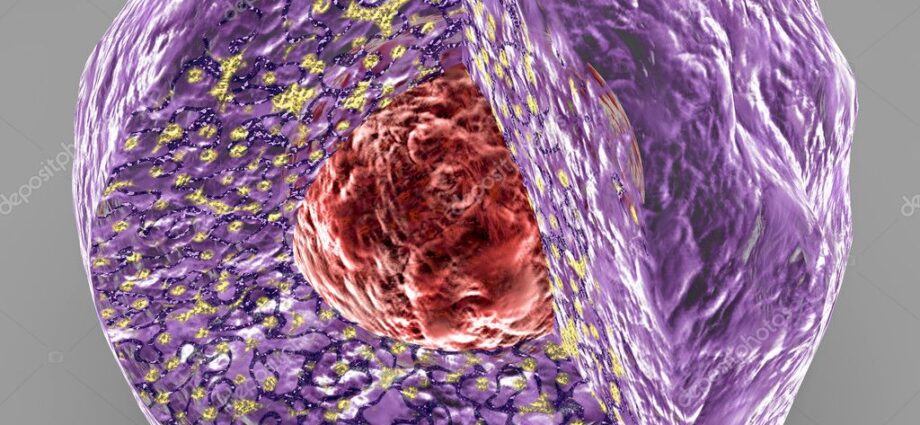
ABSTARCT:
In this article, we will discuss about the discovery of nucleus in the cell that contains mostly of the genetic material. This discovery revolutionized the field of modern biological sciences. Before the discovery of nucleus, cell was considered as hollow object. But it was rejected by Robert Brown in 1830. The genetic material is present in the nucleolus of the nucleus. Nucleolus also called as the machinery for the synthesis of ribosomes. Nucleus also contain nuclear pores and genetic material in the form of chromosomes.
INTRODUCTION:
The discovery of the nucleus within cells was a pivotal moment in the field of biology, revolutionizing our understanding of cell structure and function. This article aims to shed light on the history of this discovery, exploring the scientists involved and the experiments that led to this groundbreaking revelation. Through their collective efforts, these pioneers fundamentally transformed our knowledge of cellular organization and laid the groundwork for further advances in cellular biology.
DISCOVERY OF NUCLEUS:
The notion of a nucleus within cells began to take shape in the mid-19th century through the investigations of several prominent scientists. In the 1830s, Scottish botanist Robert Brown first observed the presence of a dense structure within plant cells, which he referred to as the “nucleus.” However, it wasn’t until the late 19th century that this discovery gained significant attention.
In the 1860s, Swiss biologist Wilhelm von Nägeli and German anatomist Robert Remak independently proposed that the nucleus played a central role in cellular organization and growth. Their theories set the stage for further exploration in this area. https://www.ncbi.nlm.nih.gov/pmc/articles/PMC3101846

BREAKTHROUGH CONTRIBUTIONS:
The breakthrough discoveries of Friedrich Miescher and Walther Flemming solidified the understanding of the nucleus as the cell’s control center and repository of genetic material. In 1869, Swiss biochemist Friedrich Miescher isolated a substance from the nuclei of white blood cells, which he called “nuclein.” Miescher’s work marked the first step towards identifying DNA as the primary component within the nucleus, setting the stage for later research on genetics and heredity.
The crucial role played by the nucleus in cell division was revealed by German anatomist Walther Flemming. In the late 1870s, Flemming meticulously observed the systematic changes occurring within dividing cells under a microscope. His observations led to the identification of chromosomes, thread-like structures that are densely packed with DNA.
Flemming’s groundbreaking work paved the way for the understanding of chromosomal distribution during cell division and the remarkable role played by the nucleus in this process. He proposed the term “mitosis” to describe the orderly distribution of chromosomes into daughter cells.
MODERN UNDERSTANDING AND SIGNIFICANCE:
The discoveries of Miescher and Flemming revolutionized our understanding of cells and laid the foundation for further advancements in the field of genetics. The nucleus, as the repository of DNA, holds the blueprint for cellular processes, determining the structure and function of an organism.
Today, our understanding of the nucleus has expanded exponentially, with advancements such as the discovery of RNA and the elucidation of the central dogma of molecular biology, which describes the flow of genetic information from DNA to RNA to proteins.
CONCLUSION:
The discovery of the nucleus within cells stands as a landmark achievement in the history of biology. Scientists like Miescher and Flemming paved the way for subsequent breakthroughs, unraveled the role of DNA.
The continued exploration of cellular biology and the nucleus holds great promise for future discoveries, impacting fields such as medicine, genetics, and biotechnology. As our understanding of the nucleus expands, so too does our knowledge of the intricate mechanisms governing life at the cellular level.
REFERENCES:
Kornberg RD. DNA transcription. Proc Natl Acad Sci U S A. 2007;104(19):7131-7132. doi:10.1073/pnas.0702595104
Strambio-de-Castillia C, Blobel G. Organelle formation and endocytosis in yeast: evidence for requirement of a Nup159p and Sec13p complex. Proc Natl Acad Sci U S A. 1999;96(2):551-556. doi:10.1073/pnas.96.2.551.
Zirkle RE. Frederick Miescher and the Discovery of DNA. Ann N Y Acad Sci. 1960;85:427-438. doi:10.1111/j.1749-6632.1960.tb40950.x
Altman PL, Katz DD 1976. Biological Handbooks. I. Cell Biology. Federation of American Societies for Experimental Biology, Bethesda, Maryland.
Andersen JS, Lyon CE, Fox AH, Leung AKL, Lam YW, Steen H, Mann M, Lamond AI 2002. Directed proteomic analysis of the human nucleolus. Curr Biol 12: 1–11.


